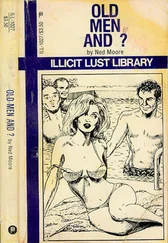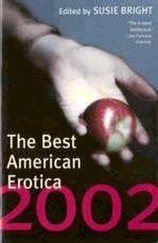‘Your little man drove off in your car,’ she said.
‘Er, yes, I asked him to.’
‘Why on earth would you do that, Philip?’
‘He — there was some urgent business for him to take care of in London.’
‘At a time like this?’ Her eyes were very red.
‘Yes.’
‘Mrs Erskine!’ said Millicent Bruiseland, who had appeared at the end of the corridor.
‘Not now, Millicent.’
‘But I have the most important news about your son.’
‘You often do.’
‘But I utterly utterly promise that this time it’s—’
‘For heaven’s sake, girl, even you are old enough to realise that this is not the time for your interminable filth,’ barked Erskine’s mother. ‘You and your parents should be ashamed of yourselves. Go to your room.’
Millicent Bruiseland looked angrily at Erskine and then ran off. Erskine’s mother took a moment to calm herself and then said, ‘If the car’s gone, how are you going to get home?’
‘On the train,’ said Erskine.
‘You hate the train.’
‘Oh, what the hell does it matter, Mother?’ he shouted, and pushed past her to the stairs. He wondered what Sinner was laughing most heartily over as he drove back to London — how easily Erskine had been overcome, or the disgusting unmanly noises he’d made in the process? But in fact as he passed Camberley Sinner was not thinking about Erskine at all, but rather about a remark that Casper Bruiseland had made in the observatory last night; a remark that had been submerged in the Polish honey mead until that pre-coital conversation with Erskine had jogged his memory; a remark about a clever new scheme that Casper had developed to get some money out of his father.
As I sat sipping tea on Tara Southall’s comfortable sofa, this is what I thought: Kevin, you need a bit of focus. If you hadn’t been chatting to Stuart at the same time as you ran a search for ‘Philip Erskine’, you might have realised that the scientist who got the letter from Hitler and the planner of a town in Berkshire weren’t necessarily two different people. If you hadn’t got used to skim-reading Wikipedia pages, you might have been able to remember whether the latter man had a confirmed date of death. And if you hadn’t been so obsessed with Ariosophist conspiracies, it might not have taken you quite so long to come to the conclusion that it was Philip Erskine himself who, at the age of ninety-eight, had employed a murderous Welshman to track down Seth Roach’s body.
In 1957, shortly before his second, fatal stroke, Edgar Aslet was appointed to the committee of the East Berkshire Regional Plan. Asked to suggest some talented young men to carry out the committee’s recommendations, he chose the fellow who he thought was most likely, of all his friends’ sons, to impose a calming conservative influence on the dubious notion of socialised housing. But when Philip Erskine arrived for his first meeting, Aslet hardly recognised this bright-eyed evangelist for the government’s New Towns policy. Erskine couldn’t stop talking about the ideas of an American called Balfour Pearl, who had become his friend and mentor after a chance meeting at a black tie gala in Manhattan in 1949. (Neither The Perception of Harmony: A Life of Philip Erskine nor Look Upon My Works: Balfour Pearl and the Fall of New York is able to pinpoint exactly which black tie gala this might have been.) Pearl had been forced out of government and now spent most of his time in Los Angeles; but his ideas were as influential as ever, and Erskine was determined to apply them in the south of England, where even after a decade of rapid house-building there was still, as he wrote in one report, ‘a desperate need to rescue good families from our dark, overcrowded, morally ruinous cities and install them in rational new communities which combine the most desirable qualities of rural and urban life’. Though Erskine, now forty-seven, still had little or no hands-on experience of town planning, his enthusiasm and knowledge were so impressive that the committee soon put him in charge of a New Town that was to be built south of Hungerford. After consultation with local historians ( The Perception of Harmony is, again, unable to say when this took place) Erskine decided to name the new settlement after a little-known medieval village called Roachmorton.
Drive into Roachmorton, as I did with the Welshman three or four hours after our visit to Claramore, and the first thing you will notice is the quantity of giant roundabouts, which so dominate the landscape that it is difficult to believe that the road system has been built for the benefit of the town and not the other way round. But there is a lot more to Roachmorton than roundabouts. Despite a projected population of under fifty thousand, Erskine was determined that Roachmorton should have a little of the shining grandeur of a city like New Delhi, the designer of which, Edwin Lutyens, Erskine admired almost as much as Balfour Pearl. (Erskine regretted that he had not had the chance to meet Lutyens before his death in 1948, but at least by then he was acquainted with Lutyens’ daughter Elisabeth, who had become great friends with Erskine’s sister Evelyn.) Consequently, Roachmorton is almost unique among British towns for having its public facilities arranged in classical fashion, like entries in a grammar table, along a wide treelined boulevard. And while many postwar estates were notorious for lacking anywhere to socialise, Roachmorton puts in pride of place a boxing ring (Premierland), a pub (the Caravan), a working men’s club (the UUC), and a hotel (the Hotel de Paris), all named with the help of those same diligent local historians to give a sense of what later eras would call ‘heritage’ and ‘continuity’. Nearby are St Panteleimon’s Hospital, the Gittins Museum of Entomology and Philology, and a town hall built of red brick and marble in a distinctive country-house style, incorporating the well-stocked public library, from which visitors can look out over a large artificial lake, colloquially known as ‘the Pond’. Like Oscar Niemeyer, the designer of Brasilia, Erskine had declined to visit the site before making his plans, so he didn’t set eyes on Roachmorton until 1961 when it was nearly half-complete. By then, his ambitious vision had already received special praise from both the Minister of Housing and the leader column of The Times . But within only a few months of the arrival of the first optimistic residents, while the town was practically still under manufacturer’s warranty, the complaints began.
In Roachmorton it was impossible, for instance, to vary your route to school. For every one of the town’s thousands of detached houses there was a specific mathematically optimal path towards the larger thoroughfares, and to make the perverse choice to reject this path would often require a ten-minute detour. So it was rare to bump into anyone near your home but your immediate neighbours. But it was even rarer in the centre: trudging to the town hall across the gaping boulevard, you might, like an Arctic fisherman, catch sight of a friend in the far distance, but a face-to-face chat would require, like the town itself, a detailed plan. To get lost even a few streets from your front door took only a moment’s inattention, since every little close looked exactly alike, and the flashers who took day trips to Roachmorton because of its many blind underpasses would often find themselves wandering like minotaurs in a maze until long after they’d missed the last train back. With many houses, for privacy’s sake, facing the blank side wall of the next prefabricated house, there was not much pleasure to be taken in looking out of the window, yet at the same time almost every family could point out some glitch in the sight-lines which meant that they could see directly, for instance, into the upstairs bedroom of the house round the corner. Naturally, all this was pretty claustrophobic, but no one wanted to get on the bus just to go for a pint in the enormous Caravan, and there were hardly any pubs or shops out in the residential areas because the generous provision in the centre was supposed to have negated any need for them. As every day brought new problems that Erskine had never anticipated and had no particular interest in addressing, many of the first residents of Roachmorton reported that they felt as if they’d been sent into exile; and on our visit to Tara Southall’s house — around which the streets were so lifeless that one expected cobwebs the size of football nets — I could see why.
Читать дальше











